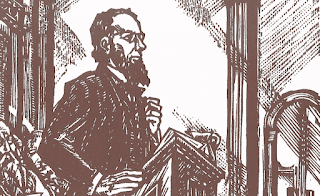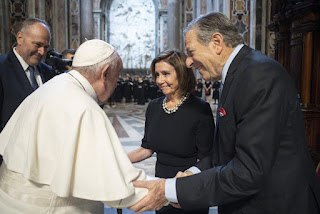Photo: The Crowning of Mary, Queen of Heaven, Mural by Willian Lauren Harris, Saint Paul the Apostle Church, NY.
« To day is the holy day of the Assumption of the dear blessed Mary other of our Lord and Saviour Jesus. Oh may I be found worthy of her regard and love. » So wrote the then 24-year old Servant of God Isaac Thomas Hecker in his Diary on August 15, 1844, exactly two weeks after his entry into the Catholic Church.
La Madonna di mezz’agosto was how my Sicilian grandmother used to refer to today’s festival of the Assumption (typically termed the « glorious » Assumption) of the Blessed Virgin Mary, which has been celebrated on this same date for so many centuries.
Early on in American history, the Assumption received special attention and solemnity in the newly created the United States as the patronal feast of Baltimore, the first U.S. diocese (then encompassing the entire territory of the new country). In his first pastoral letter to his extensive American diocese, Bishop John Carroll called on all U.S. Catholics to celebrate the feast: « to unite with one heart, and in one earnest supplication to the father of all mercies, and the giver of every good gift, through the intercession of the Blessed Virgin, that he may be graciously pleased to preserve, increase, and diffuse a sincere and well-grounded attachment to the principles of our. holy religion; to advert from us the seduction of error and pestilential infidelity; to awaken and renew in us the spirit of solid piety, and of watchfulness over your unruly passions; to animate us to the fulfilling of all the commandments; to pour down on our country blessings spiritual and temporal; and to receive our grateful and humble thanks for the innumerable favors, which we continually receive from a Bountiful Providence. »
Certainly, that remains a worthy prayer agenda for this happy feast in our own troubled time as well!
Early traditions saw Mary’s death (her « Dormition ») as an extraordinary event. It is thought that traditions about Mary’s « Dormition » and her accompanying Assumption can be traced as far back as the 2nd century. According to one of the most influential accounts, Mary’s life ended in Jerusalem and she was buried there by the apostles. Thomas, however, was characteristically absent. After his late arrival, the tomb was reopened and found empty, as a result of which the apostles believed her to have been taken up (« assumed ») into heaven. According to Saint John Damascene (c.675-749), Saint Juvenal,the Bishop of Jerusalem, recounted this to the emperor at the Council of Chalcedon (451).
Whatever may be inferred from these narratives, Eastern Orthodox Christians affirm that, after Mary had died a natural death, her final resurrection was anticipated and she was carried completely, body as well as soul, into the glory of heaven. Accordingly, they celebrate the Dormition of Theotokos on August 15, preceded by a strict 14-day fast. Roman Catholics likewise affirm faith in Mary’s body-and-soul assumption and celebrate it on the same date (although without any preparatory fast). Catholic teaching, now formally dogmatically defined by Pope Pius XII in 1950, leaves it an open question whether Mary actually died and was then raised up to heaven or whether she was directly assumed into heaven without having died first.
In 1946, Pope Pius XII, in a letter to the world’s bishops Deiparae Virginis Mariae, asked them:
« Do you, venerable brethren, in your outstanding wisdom and prudence, judge that the bodily Assumption of the Blessed Virgin can be proposed and defined as a dogma of faith? Do you, with your clergy and people, desire it? » To this inquiry, the Pope received an unsurprisingly resounding response, which he characterized as « outstanding agreement of the Catholic prelates and the faithful. » This showed, the Pope claimed, « the concordant teaching of the Church’s ordinary doctrinal authority and the concordant faith of the Christian people which the same doctrinal authority sustains and directs » (Munificentissimus Deus, 12).
Those were the days! Try to imagine such concordance in the conflict-ridden factionalized Church of today! Try to reimagine the missionary self-confidence and future-oriented hopefulness expressed in that Holy Year of 1950, in the papal bull defining the by-then fully accepted Catholic doctrine.
Preaching at the Sixth national Marian Congress of France in July 1950, the Papal Nuncio to France, Archbishop Angelo Roncalli (Pope Saint John XXIII) composed this prayer:
O Mary, Mother of Jesus and our Mother too! We hail you with this cry that all generations repeat, contemplating the mysteries of your life and the splendor of your Assumption. Once more we hail you as blessed, beata; intercede for us, O glorious Queen of the world and be ever mindful of us, particularly in the dangers and needs of the present hour.





